Often dubbed “Little Vienna,” Timișoara boasts the most historical buildings in Romania. Its rich architectural tapestry ranges from Baroque to Viennese Art Nouveau. However, it’s not just the architecture that beckons visitors.
What captivated me most about Timișoara was its vibrant atmosphere. And let’s not forget the delectable food! The city pulses with life, offering an array of pubs that warmly welcome visitors after a day of exploring. Truly a melting pot, Timișoara, like many spots in Transylvania, embraces a multicultural identity. A significant number of its inhabitants are Hungarians, remnants of a time when the region was under Hungarian jurisdiction.
I warmly invite you to delve into Timișoara: from its captivating sights to its culinary delights.
Table of Contents
- 1 Attractions of Timisoara
- 2 Huniade Castle
- 3 Union Square
- 4 Victory Square
- 5 Liberty Square
- 6 The Cathedral of the Three Holy Hierarchs: Timișoara’s Architectural Marvel
- 7 Timișoara’s Rose Park: A Blooming Oasis in the City of Roses
- 8 Parcul Botanic
- 9 Anton von Scudier Park
- 10 New Synagogue in Timisoara
- 11 Diverse Attractions of Timișoara
- 12 Restaurants in Timisoara
- 13 Where to Stay in Timisoara
- 14 Timișoara: A Must-Visit or Not?
Attractions of Timisoara
Wondering what sights await you in Timișoara? The city’s essence is encapsulated in its historic heart: the Cetate district.
The Cetate district presents a harmonious blend of eras. On one side, the downtown area is punctuated with historical landmarks, housing some of the city’s oldest structures. Contrasting this, you’ll find regions characterized by relatively newer buildings, which emerged following the dismantling of the original fortifications.
Huniade Castle
Dominating the cityscape is the Huniade Castle. Despite being ravaged in 1849, it was painstakingly restored and now shelters the Banat Museum (though it’s currently undergoing renovation as of summer 2023). Echoes of an 18th-century fortress linger, contributing to the city’s rich architectural legacy.
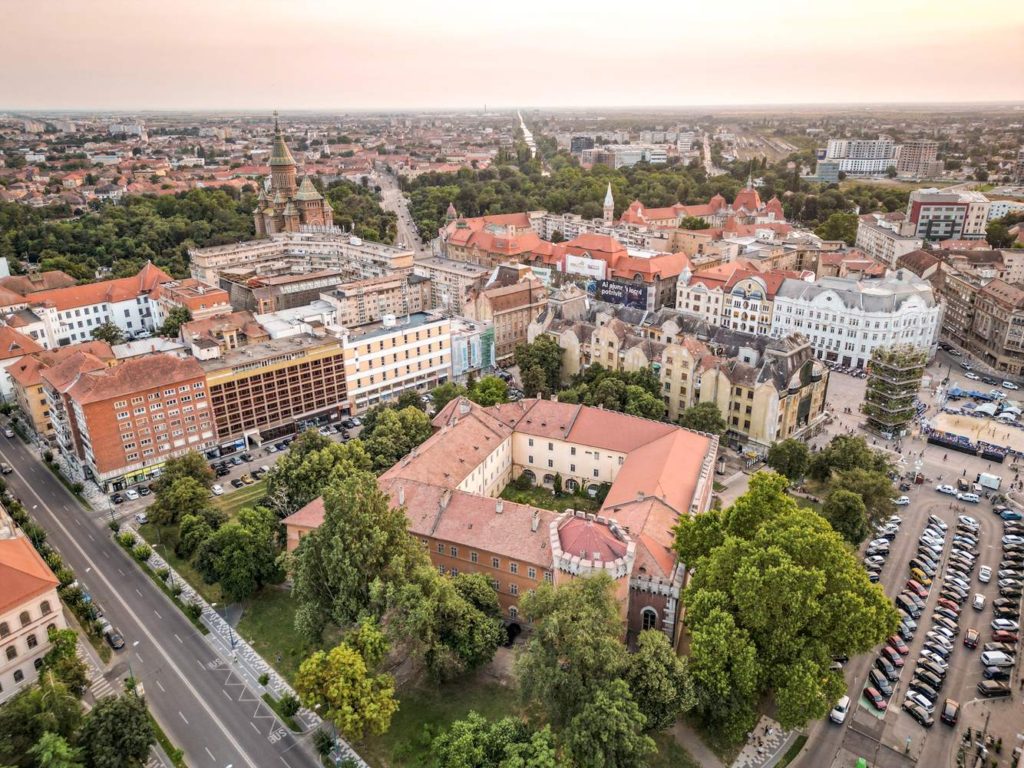
Union Square
In the heart of Timișoara lie its iconic squares, each radiating a distinct architectural aura. Take the Union Square (Romanian: Piața Unirii), crafted in elegant Baroque design. It invites visitors to step into the Roman Catholic Cathedral, marvel at the Plague Column, and explore even more. After all, it’s Timișoara’s oldest square. In its vicinity, the Art Museum and the Serbian Orthodox Cathedral further enhance its historical charm.
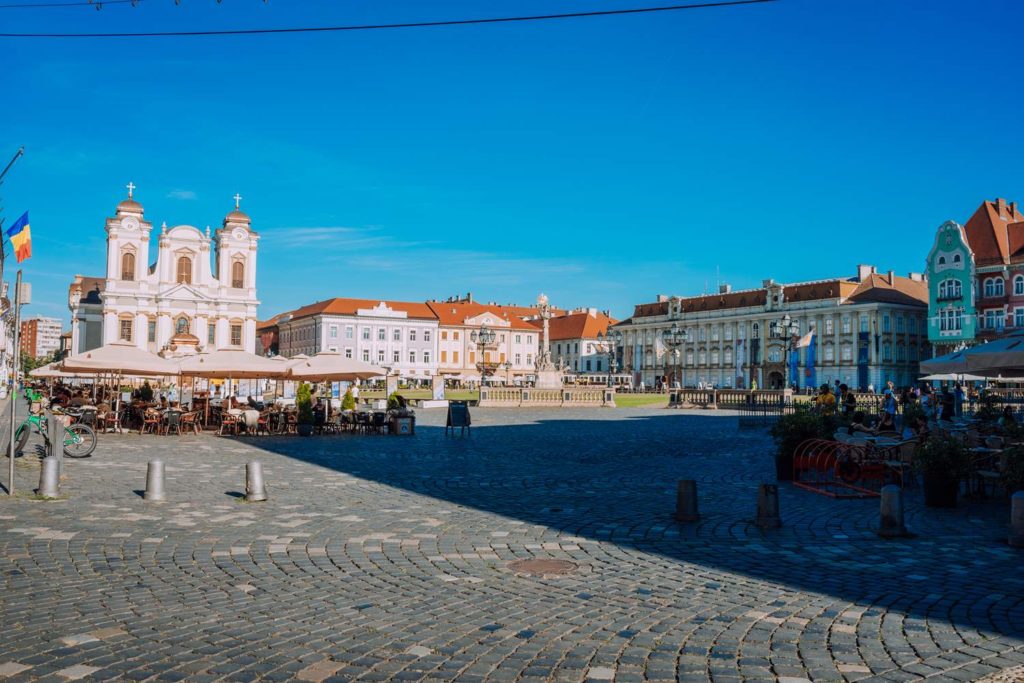
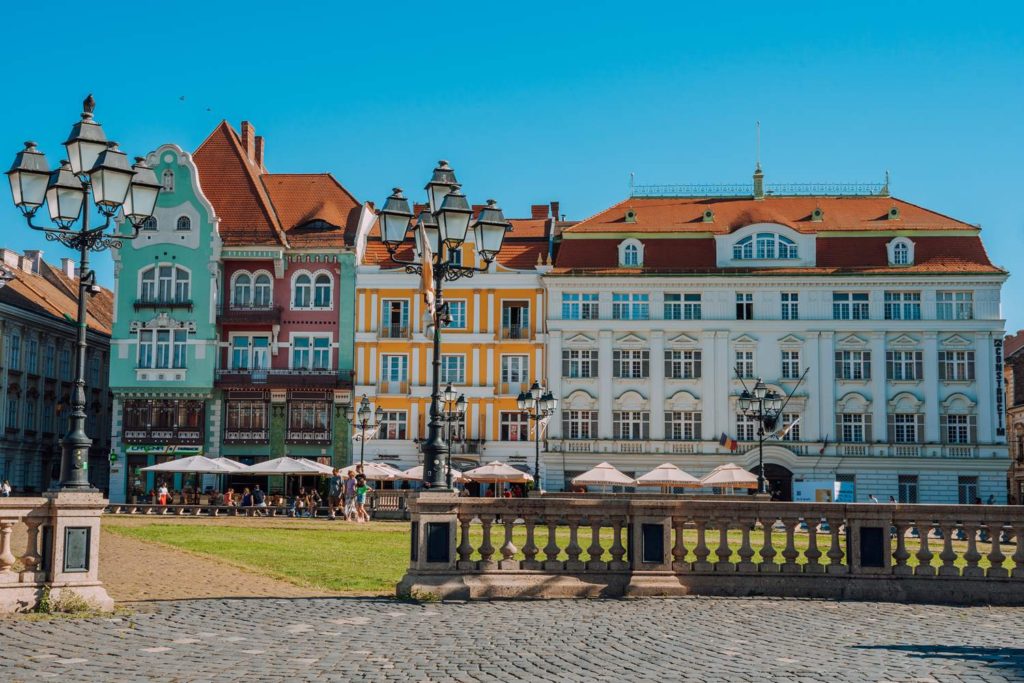
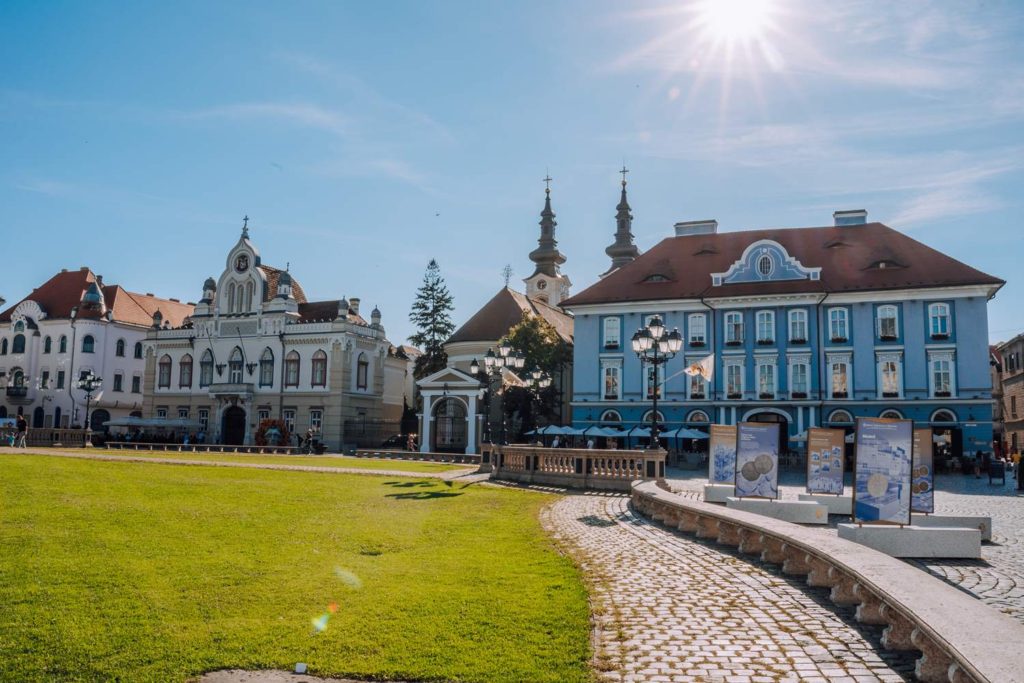
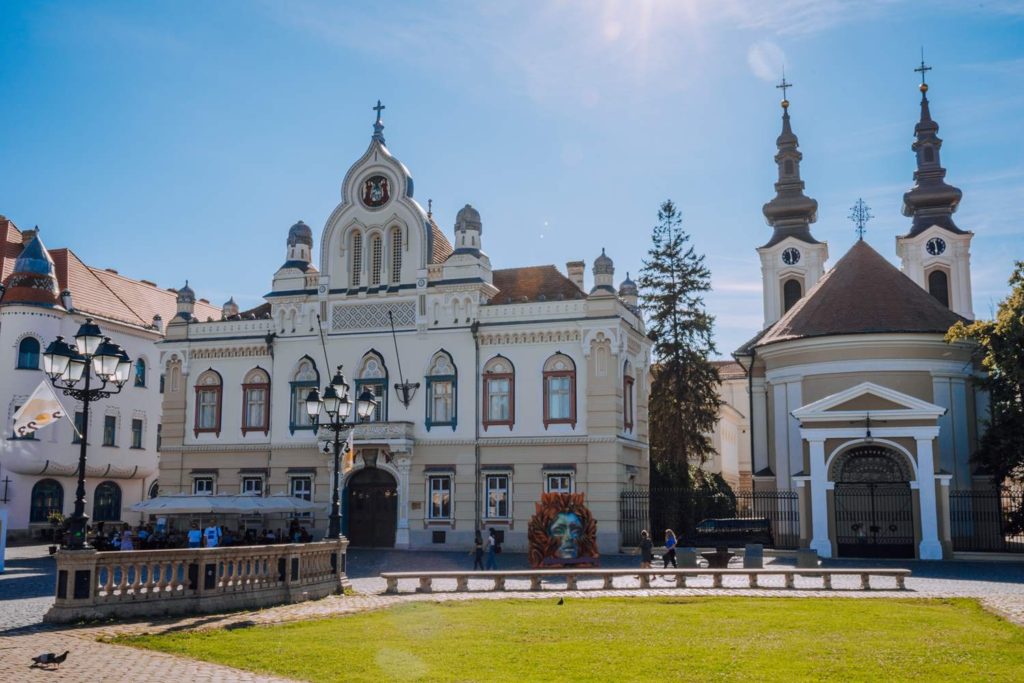
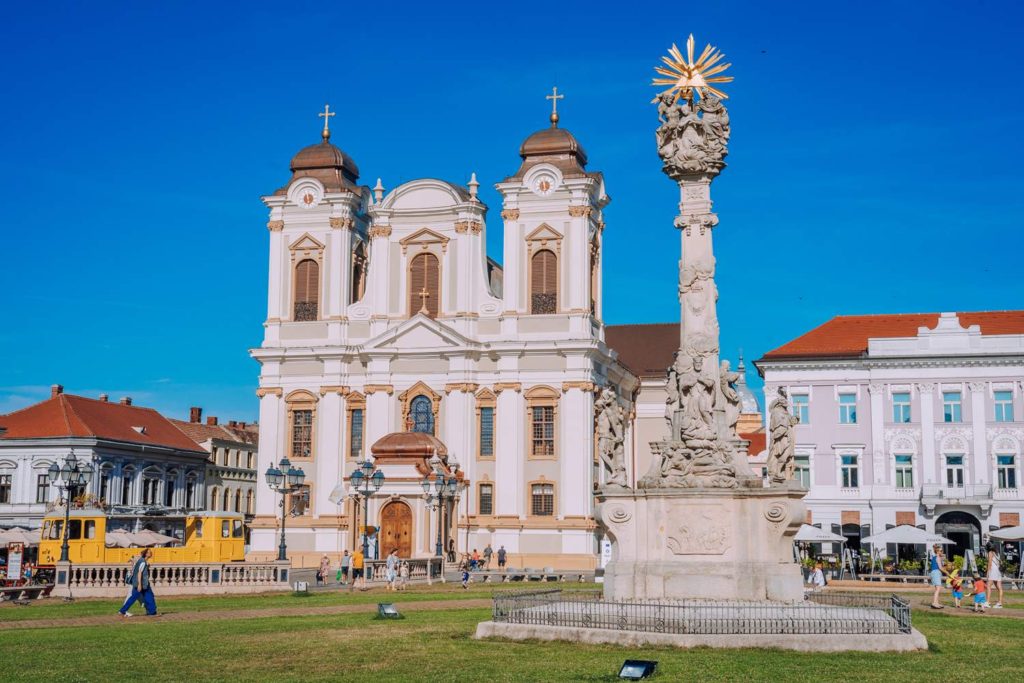
Victory Square
(Romanian: Piața Victoriei), emblematic in its own right. László Székely, its architect, drew from Austrian influences to frame the expansive area between the imposing Metropolitan Cathedral and the Palace of Culture. Within this palace, the National Theater and Opera House breathe life into the arts. Notably, the cathedral, standing as Romania’s second-largest church, mirrors the architectural brilliance of Moldavian monasteries.
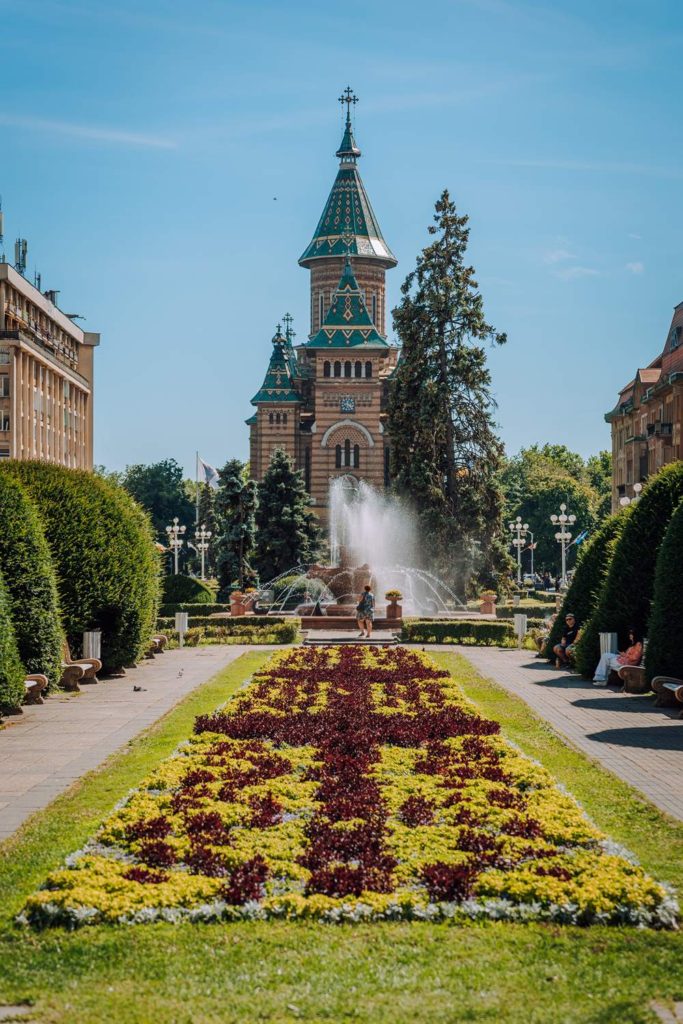
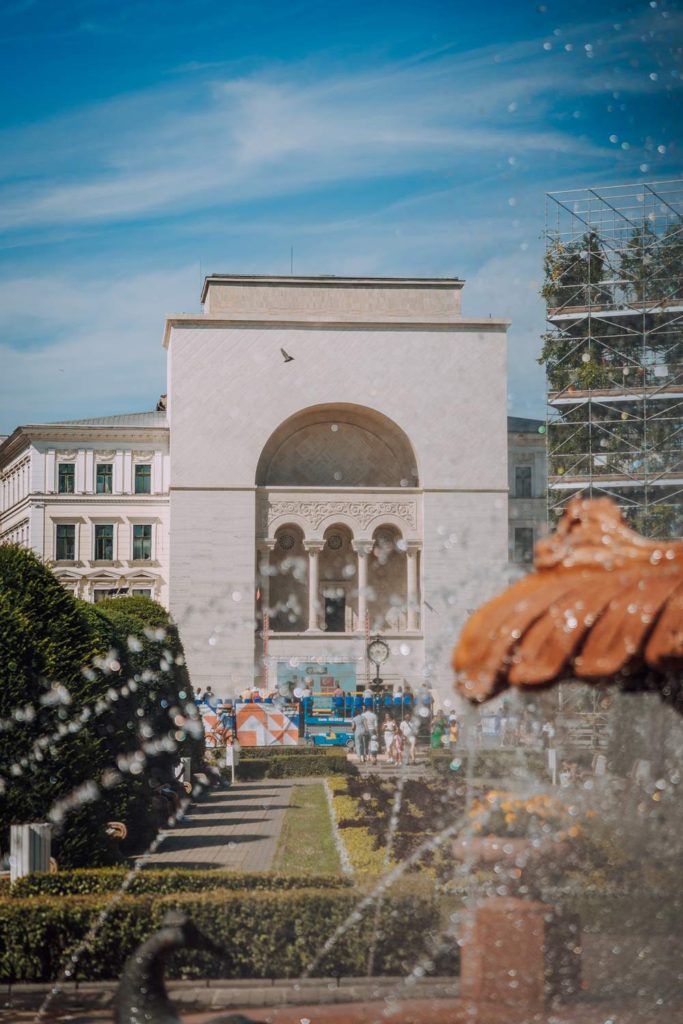
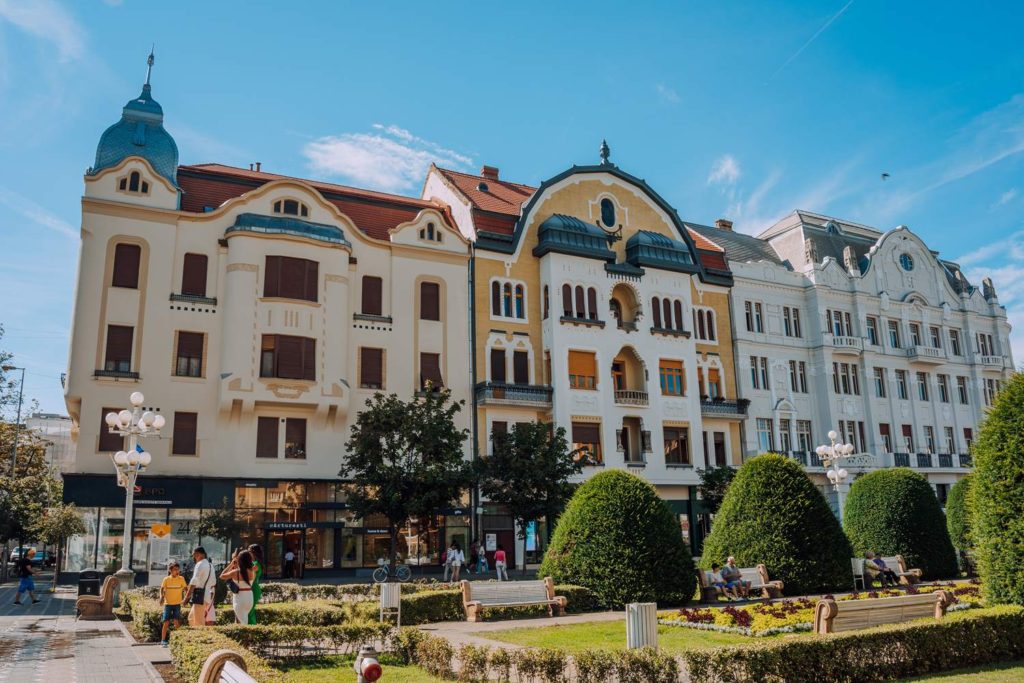
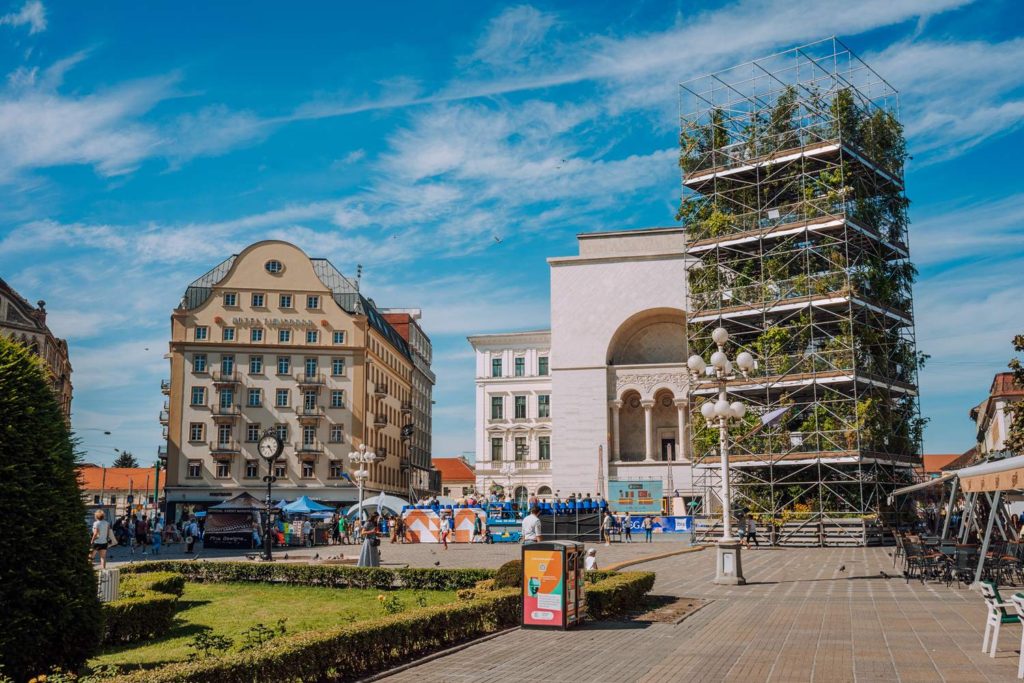
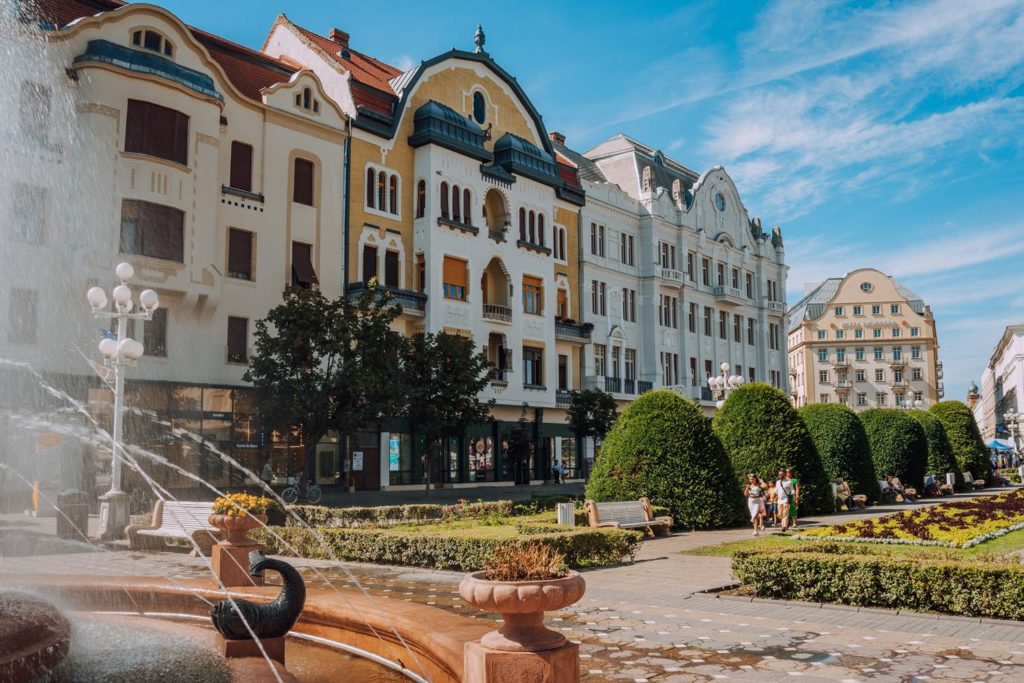
Liberty Square
(Romanian: Piața Libertății), once the military heart of the city. Its buildings seamlessly blend Baroque, Classical, and Art Nouveau aesthetics. A short stroll brings you to St. George’s Square. Here, the site of a former Jesuit church, which later morphed into a mosque, is now crowned by an equestrian statue of the dragon-slaying patron saint. This poignant monument stands as a homage to those who perished in the Romanian Revolution.
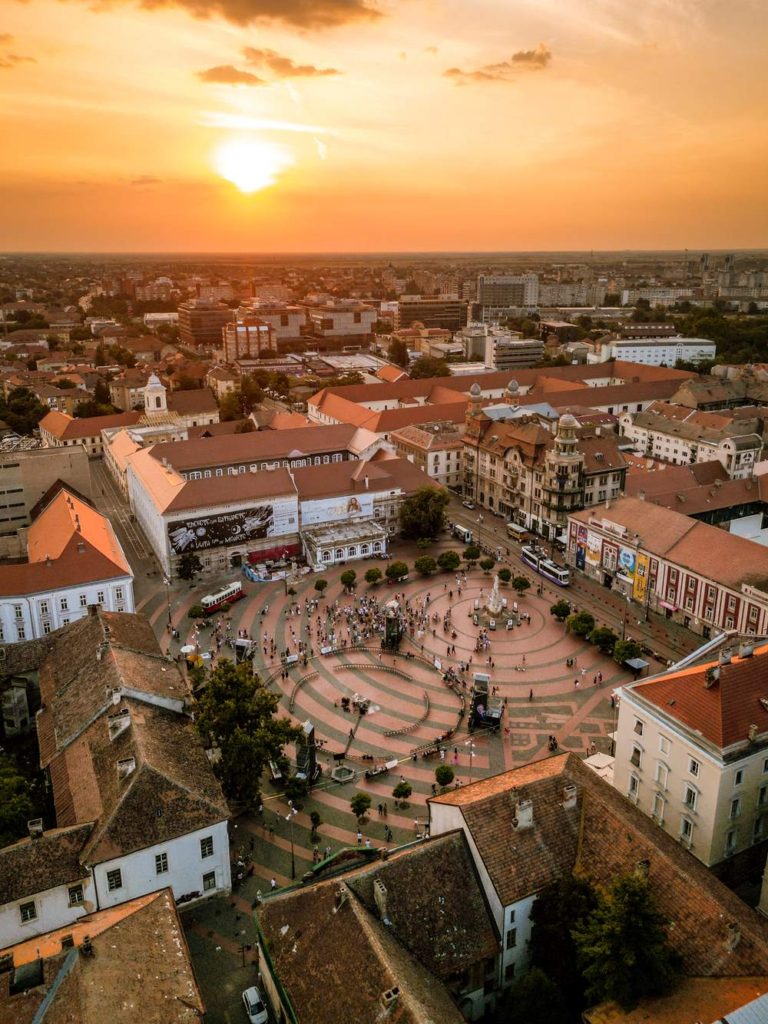
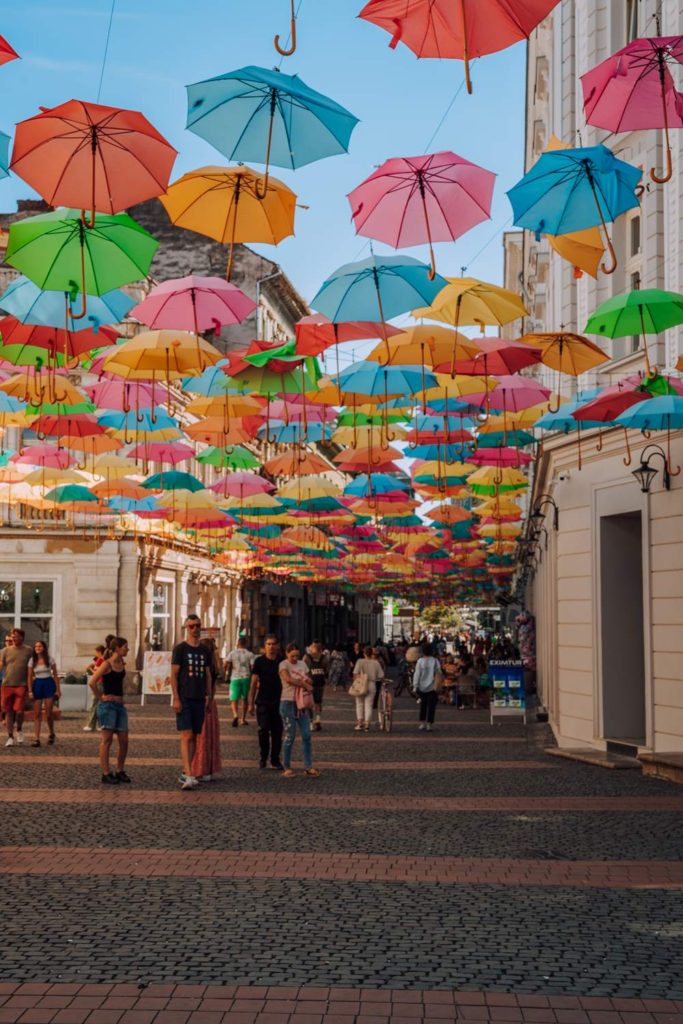
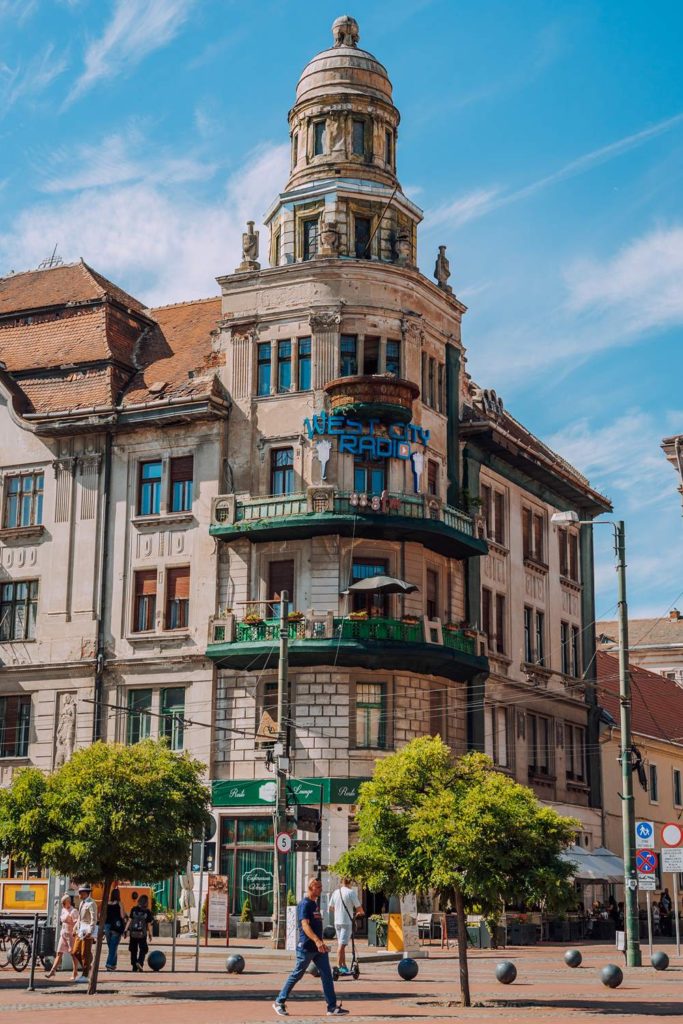
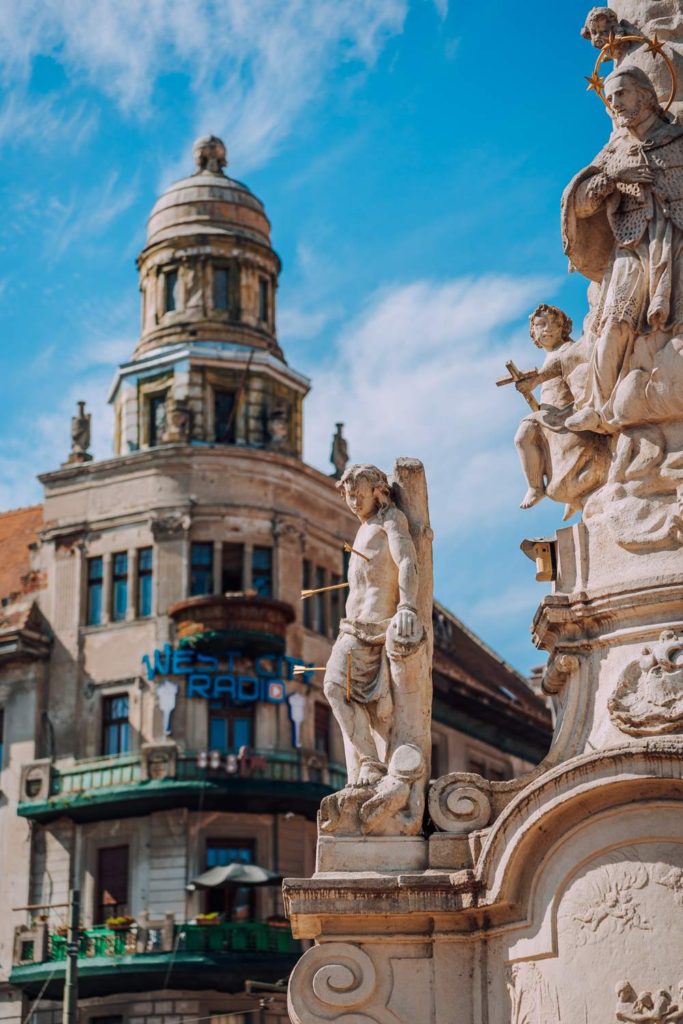
The Cathedral of the Three Holy Hierarchs: Timișoara’s Architectural Marvel
Towering majestically in Timișoara stands the Cathedral of the Three Holy Hierarchs, not only a religious masterpiece but also an emblem of the city. Constructed between 1936 and 1941, its design deceives its age, echoing the older grandeur of Moldovan architecture—especially reminiscent of the Church of St. George in Hârlau.
The cathedral is a vision straight from a fairytale, punctuated by thirteen towers—nine grand ones and four of more diminutive stature. The main spire, soaring to an awe-inspiring 83.7 meters, is a testament to architectural prowess and stands regally above the rest of the structure. It masterfully weaves Romanian heritage with nuances of Moldavian and Byzantine styles.
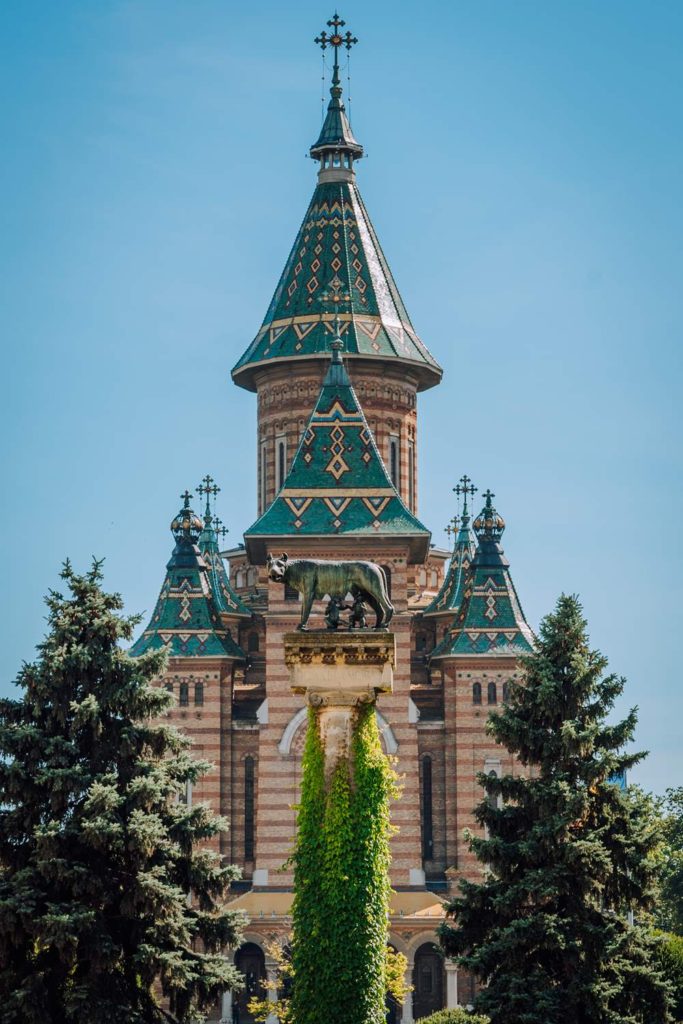
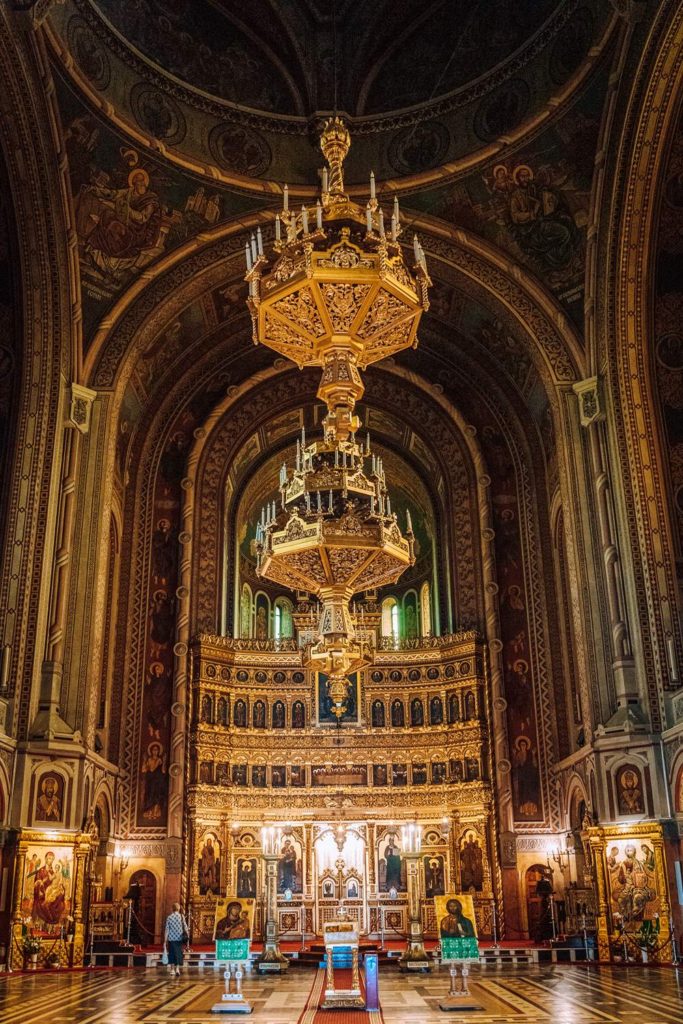
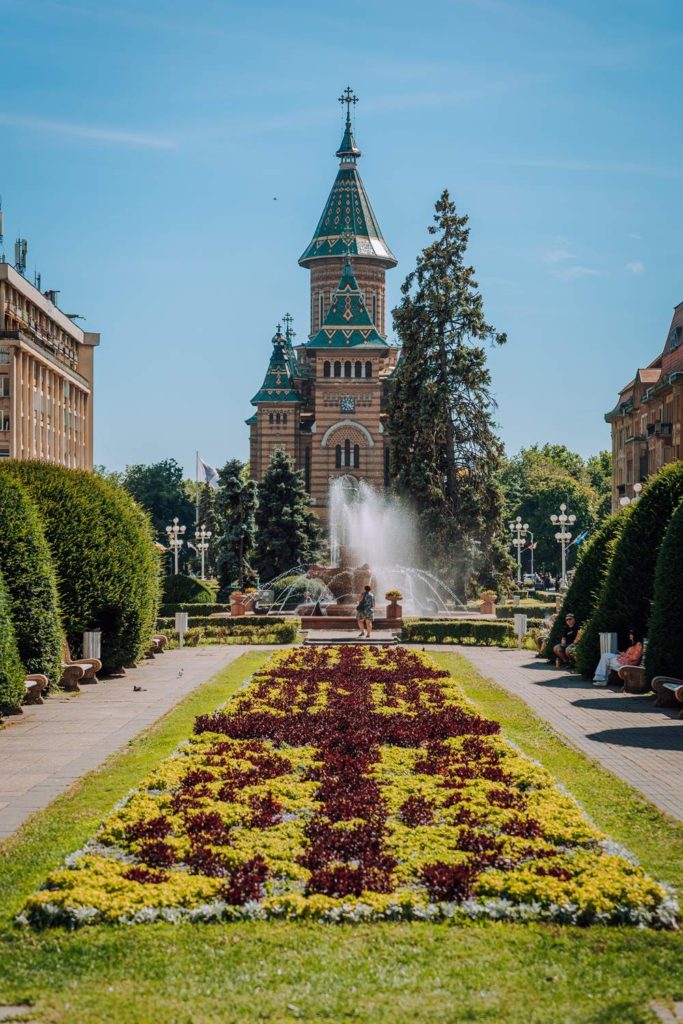
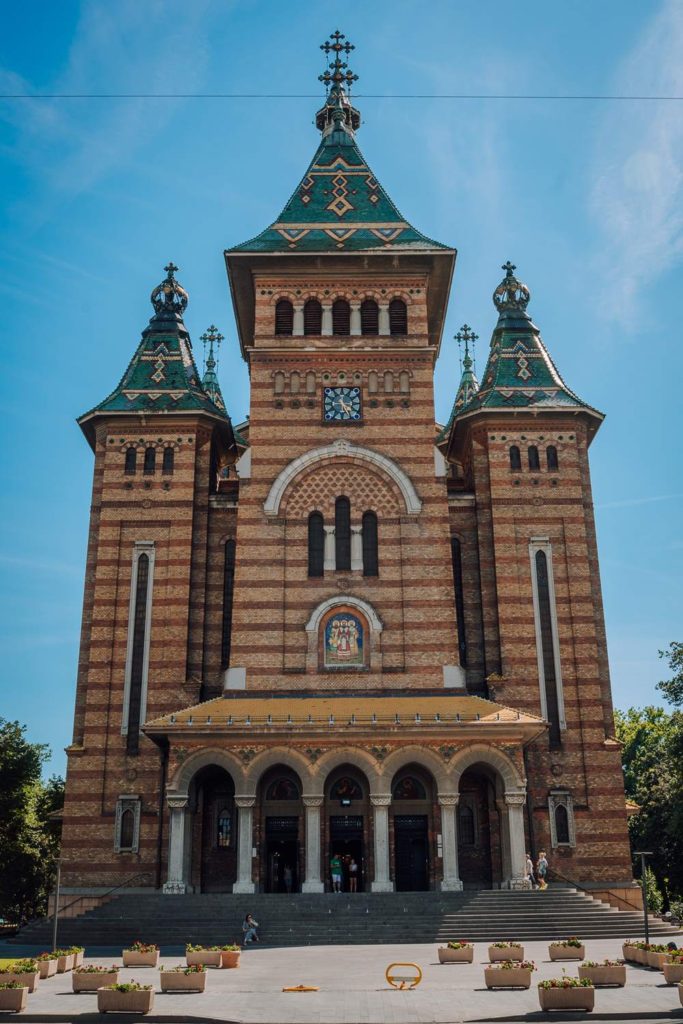
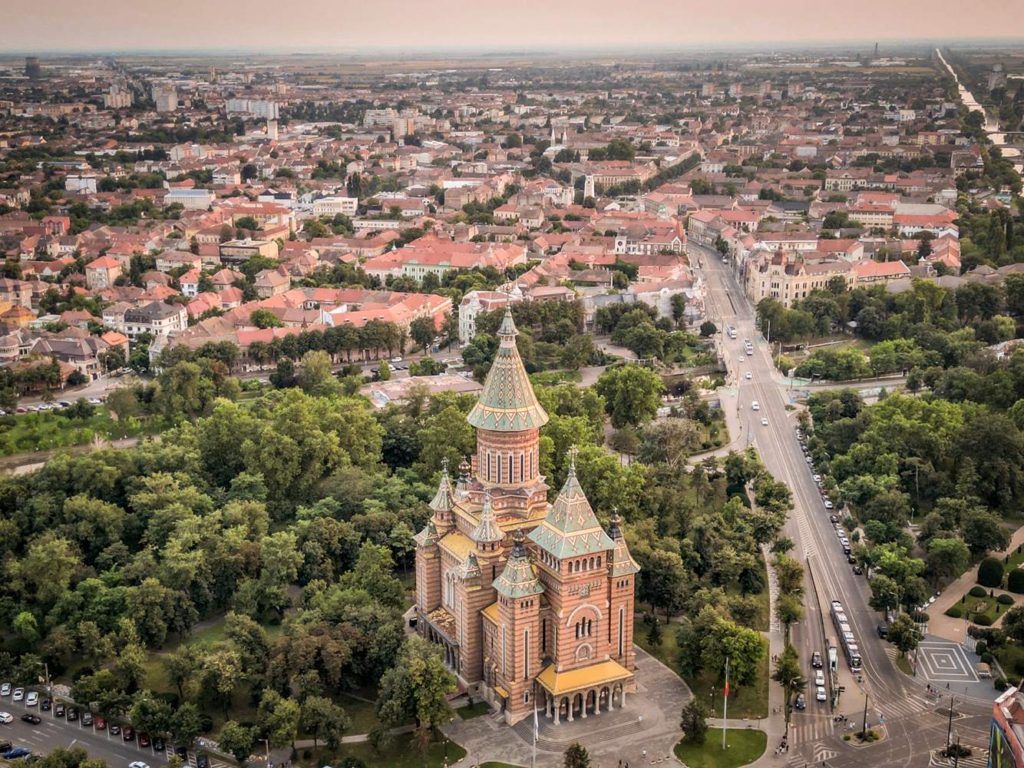
Timișoara’s Rose Park: A Blooming Oasis in the City of Roses
Timișoara wears the proud title of the “City of Roses,” and its Rose Park stands as a testament to this epithet. This captivating rosarium was birthed between 1929 and 1934, initially boasting 1,200 distinct species and varieties of roses. Prior to World War II’s upheaval, a summer theater graced the park, but tragically faced the brunt of the 1944 bombings.
Post-war resilience saw the theater rise from its ashes, and in 2012, the park experienced a renaissance. Over 11,000 square meters flourished anew with 9,024 roses and a verdant expanse of 428 trees and shrubs. As part of this revival, pergolas, benches, and ornate vases reminiscent of bygone eras were restored to their former glory. For those who find solace in nature’s embrace, the Rose Park is a haven waiting to be explored.
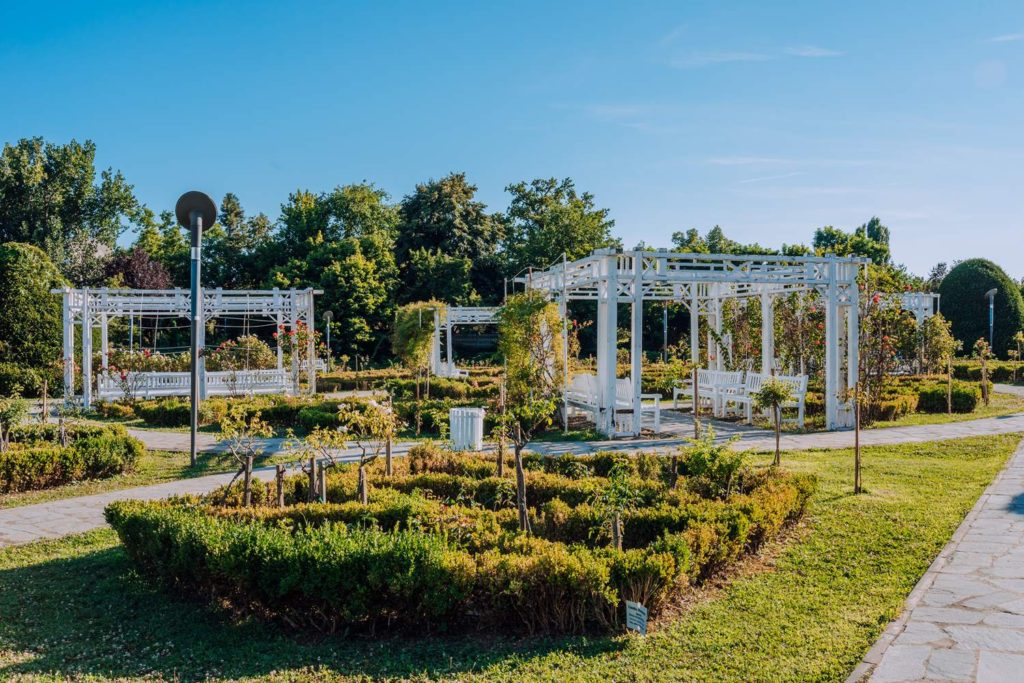
Parcul Botanic
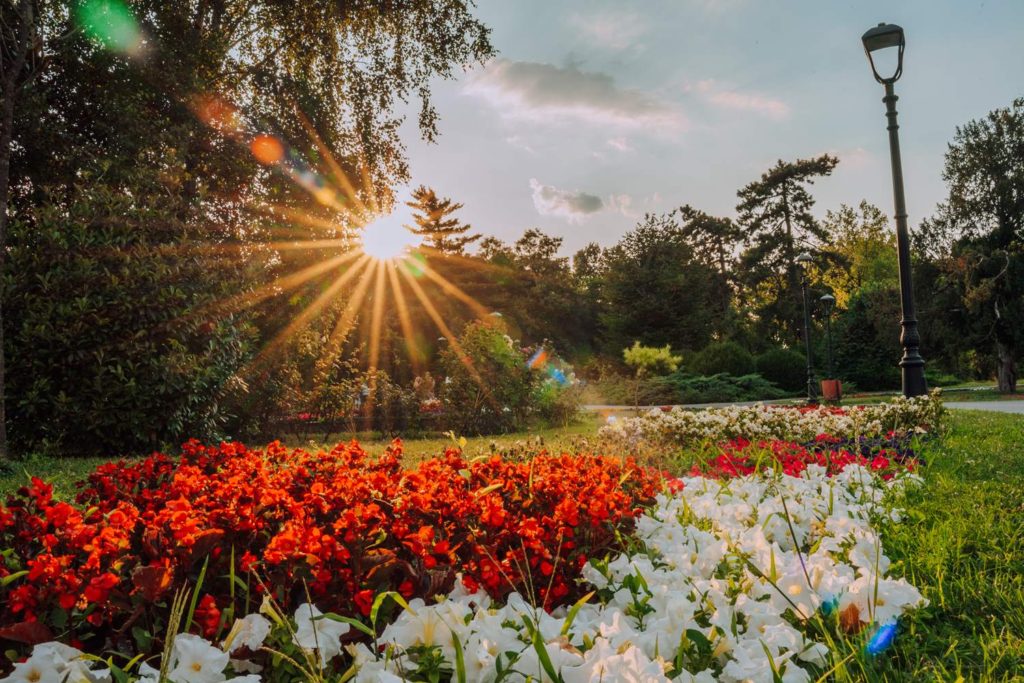
Anton von Scudier Park
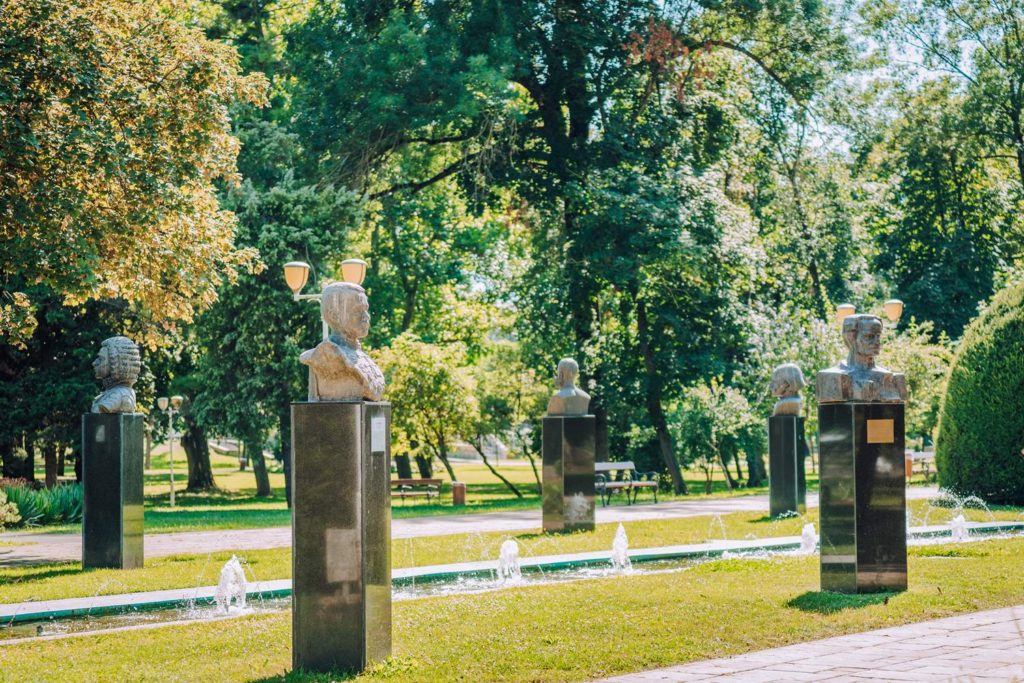
New Synagogue in Timisoara
Among the city’s gems is the New Synagogue, a marvel built in the evocative Moorish style. It stands distinctively as one of the most architecturally striking synagogues I’ve encountered. Beyond its beauty, it speaks volumes of the Jewish community’s historical significance in Timișoara, a community once pivotal to the city’s tapestry. Having faced years of neglect, this sacred edifice has been rejuvenated through restoration.
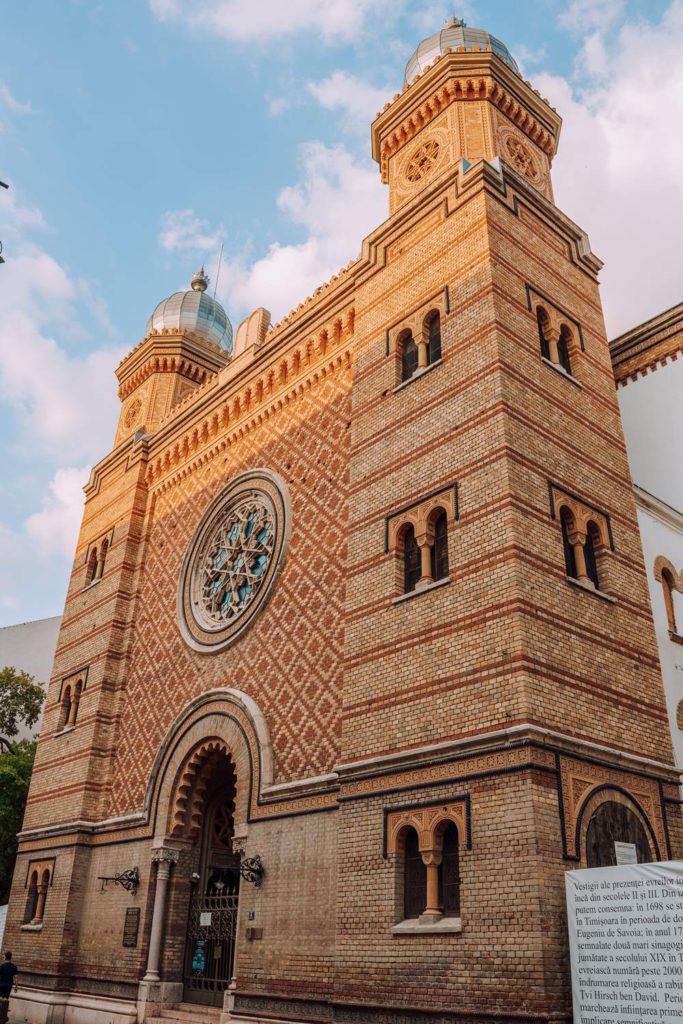
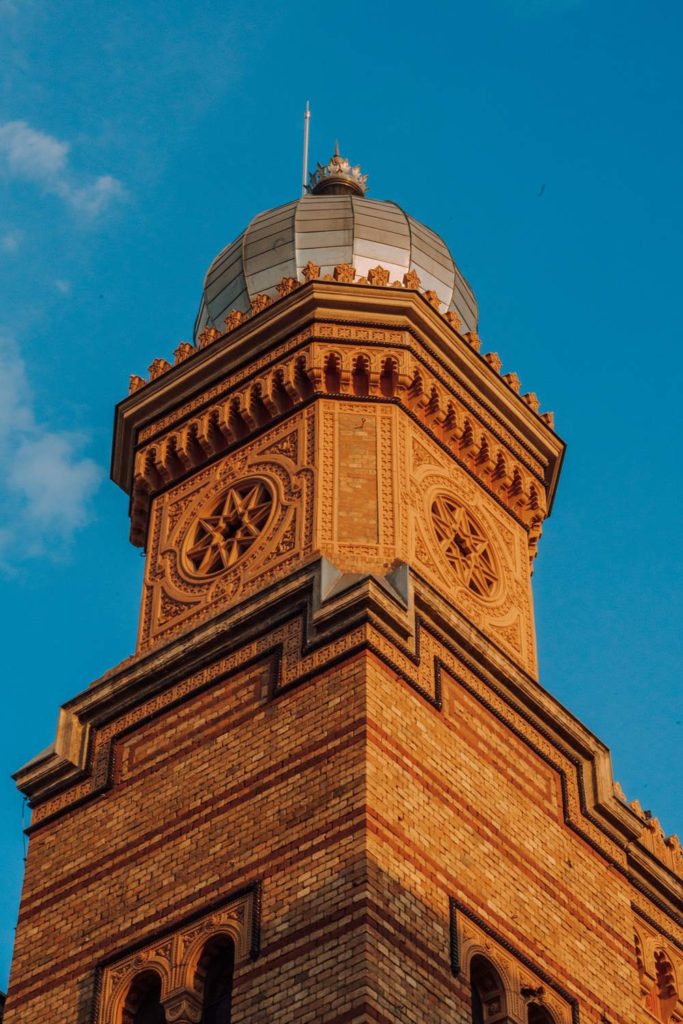
Diverse Attractions of Timișoara
Timișoara, with its expansive charm, boasts an array of attractions beyond its central landmarks. Whether you’re a museum aficionado or a photo enthusiast in search of picturesque corners, the city caters to all.
For the Instagrammers among us, Alba Iulia Street is a must-visit. As you wander, allow the vibrant canopy of umbrellas overhead to captivate and color your feed. ?
For those keen on a journey through time, the Banat Village Museum offers a window into the traditional ethos of western Romania’s Banat region. Set in the open air, it displays an assortment of Banat’s architectural legacy — from humble cottages to intricate edifices. Alas, my own visit was curtailed by time, leaving this unique treasure unexplored.
Restaurants in Timisoara
Timișoara promises an epicurean journey that’s as diverse as its history. Here are some top picks from my culinary explorations:
Miorița stands tall as my personal favorite. Every dish here is a testament to authentic Romanian flavors, served with professionalism. Their stuffed cabbage (Romanian: Sarmale) is, by my reckoning, the pièce de résistance of Romanian cuisine.
Dinar Restaurant offers an experience that goes beyond the palate. Nestled in a rustic old hut, it’s a haven for those seeking hearty portions amidst evocative decor. The ambiance is nothing short of warm and welcoming. Give their local ciorba a try, even if the prices are a tad steeper than the city’s average.
For the pizza aficionados, La Trattoria Cucina Moderna is the place to be. Simple, delicious, and authentic!
Lastly, on the recommendation of my Romanian colleague, Eddie, is Timișoreana Beer. Although I couldn’t personally visit, it promises an intriguing blend of dining and brewery experience. As you savor your meal, the backdrop of local beer production adds a unique flair. And with the craft beer wave surging across Europe, Timișoara is no exception, with new breweries making their mark on the city’s vibrant scene.
Where to Stay in Timisoara
Timișoara, with its rich tapestry of history and culture, offers a myriad of accommodations to suit every traveler’s need.
Hotels are aplenty, catering to varying budgets and requirements. Whether you’re in the city for a quick business trip or a longer leisurely stay, you’ll find a hotel that ticks all your boxes.
For a more personalized touch, guesthouses are a wonderful choice. Often operated by locals, they come with the added benefit of insider tips. These hosts, proud of their city, are usually eager to share hidden gems and local attractions.
If you’re after a homely atmosphere, especially when traveling with pets like we did with our cat, apartments offer the perfect solution. The additional space and amenities often prove invaluable. Our chosen apartment was a delightful stay and can be found here.
Booking.comTimișoara: A Must-Visit or Not?
Absolutely!
Earning the esteemed title of European Capital of Culture in 2023, Timișoara is not just a city on the map; it’s an experience waiting to unfold. As the city basks in this honor, it has become a vibrant hub of events, festivals, and exhibitions.
During my Romanian sojourn, Timișoara stood out with its pulsating energy. There’s never a dull moment here. As you wander its streets, you’re treated to a visual feast of historical architecture. But what’s even more commendable is witnessing the delicate balance of preserving history while embracing modernity in the renovations.
Planning a Romanian rendezvous? Dive in and explore:
Cluj-Napoca: A Transylvanian Gem
Salina Turda – An Amazing Salt Mine in Romania
Must-See Attractions in Oradea – The Ultimate Travel Guide